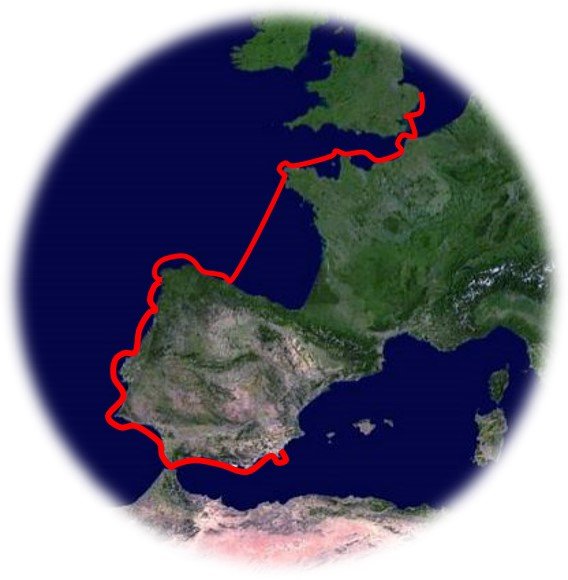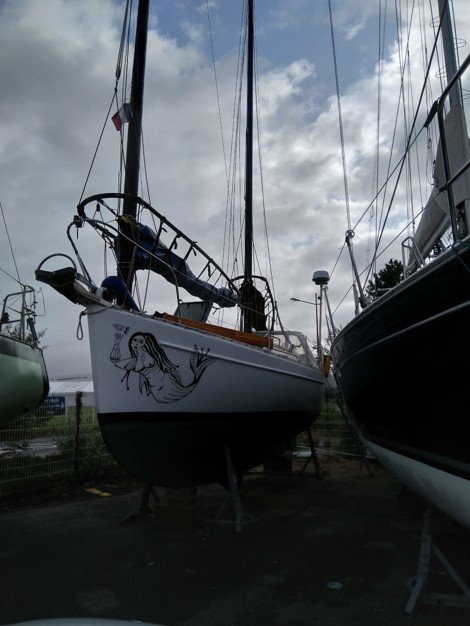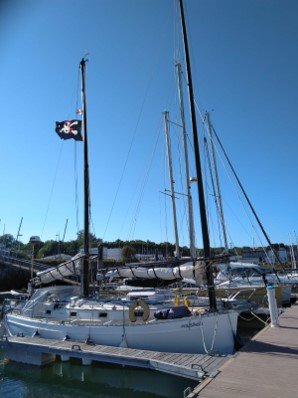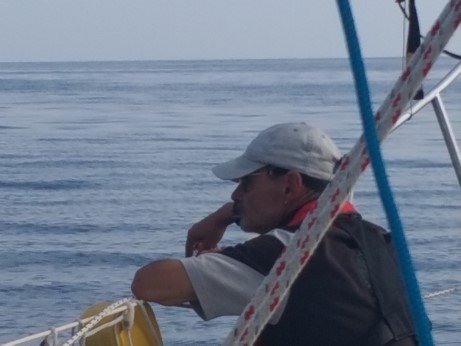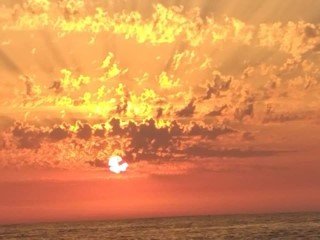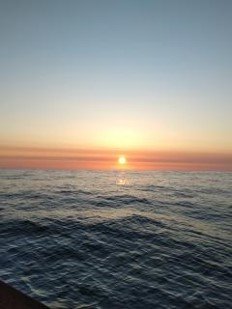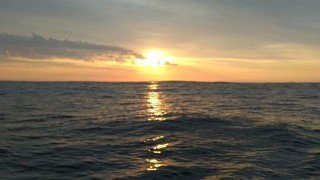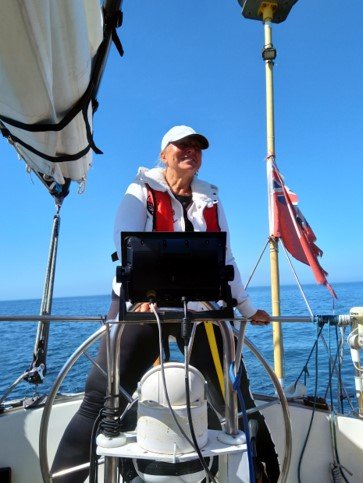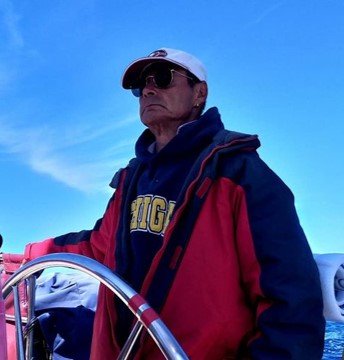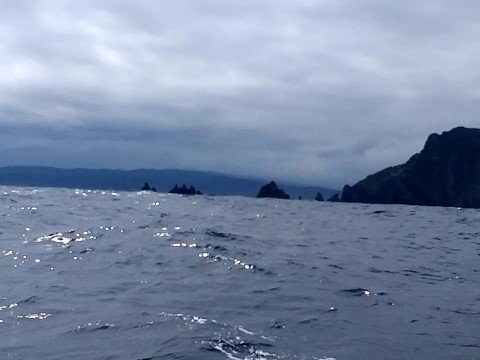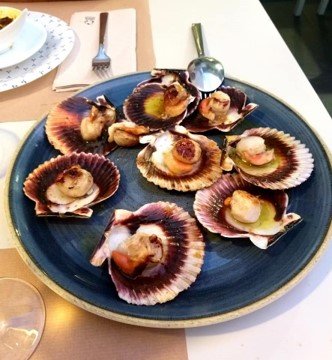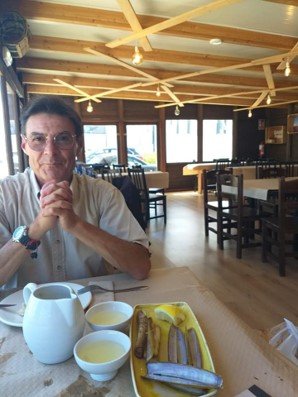Brest to Loctudy – 60 NM
We left the Moulin Blanc marina just after mid-day on June 16th, well into the ebb tide, for the 3-hour ride to Camaret-sur-Mer, at the south entrance of the Rade de Brest. Short ride, about three hours, but uncomfortable: variable NWesterlies inside the rade, and squalls coming with the wind, arriving in Camaret at 16:00, soaking wet.
The choice had been suggested to us by a good sailor friend from Brest, Jean-Pierre Clec’h, as the best departure spot to round the tip of Bretagne: easy way in and out of the harbour, and best use of the tide hours available to round the Raz de Sein.
On spring tides, the best time to arrive at the northern end of the Raz heading south is within a couple of hours of LW, when the water is still moving in the right direction, but the current is no so strong as to generate potentially dangerous eddies and counter currents in the confetti of islets and rocks between the continent and the Ile de Sein. Even on a modest coefficient spring tide, the current can clock 7 knots and the water breaks on the shallows.
I had planned a route around Touliguet due SW, through the Chenal du Petit Leac’h. On the chart it seemed reasonable and easy: straight line to the Raz, in the exact direction of the tidal current according to the tide atlas, about 20 mts avg depth, and almost three miles wide. Lots of room in case the wind does not quite cooperate.

While discussing the route with Jean Pierre though, he frowned and shook his head. No, he said. Use the Chenal de Touliguet. This is an inshore channel, 0.7 miles wide, 12 mts avg depth, and requiring a dog leg to head for the Raz once we were clear of the point. It was counter intuitive.
In querying this opinion, Jean Pierre shook his head again. I’ve never gone south that way, he said. I don’t know anyone that ever has. Use Toulinguet! he repeated sternly. I have learned to my benefit not to disregard lightly local knowledge, so I took that pearl of wisdom as gospel and reworked my pilot plan accordingly.
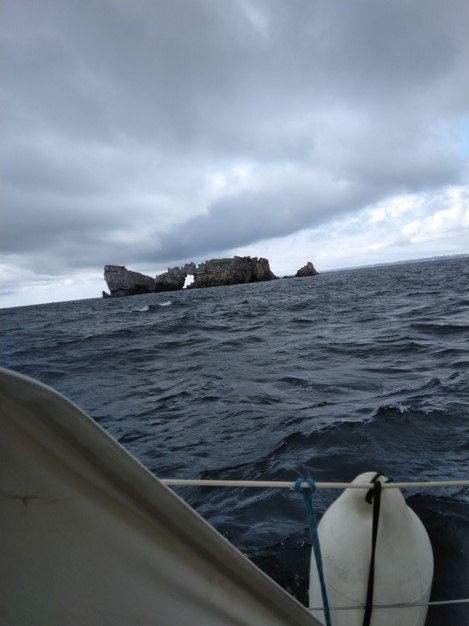
The plan called for an early departure from Camaret the following day, 05:00 cast-off, at the turn of the tide. I got up at 03:30 to brew some coffee, and weary-eyed climbed in the cockpit to a heavy rain and a pea-soup fog. Oooah gat! Mmmmm…. Nah. Forget it! I will follow your advice Jean Pierre, but not in the dark in these conditions, through a half-a-mile wide channel with rocks like fangs sticking out of the water on either side. There will be other tides. Back to bed!
We left Camaret sur Mer that afternoon at 15:30 on the following tide. The wind had backed from the early morning to NW, so we made slow progress westwards, with both sails tight like drum skins, and at the very limit of what Nausikaä can do and still move forward at all. The prime objective was to get to the north entrance to the Raz de Sein between one and two hours before LW. I had in my mind vivid images of humongous waves crashing at the base of the La Veille lighthouse off the Pointe du Raz (you’ve seen them, the ones with the lighthouse keeper opening the door at that very moment!), and didn’t want to spend any more time than strictly necessary in that vicinity.
But leaving with the afternoon tide meant that we could no longer get to Loctudy with daylight. Past midnight, best guess. Loctudy is not a difficult place to get to, but it is still a tidal river mouth, with a rather narrow channel; perhaps 30 mts at the narrowest part? So while doing the chart work the day before I included a “refuge” halfway in the pilot plan. This became a habit through the journey all the way to Torrevieja. If at all available and practicable, I would include an alternative landfall between any two points 60 NM apart or more.
Yes, it is a bit more effort to the navigation chore, but I found it has several distinct advantages. First, it is a Plan B in case of unexpected change in conditions or technical faults with the gear, without having to undo the progress made up to then and return to the point of departure. Second, the route is already planned. When running for cover, even if simply to cope with tiredness, it is not the time to leaf through pilot books for the basic info or do chart work. One is liable to make mistakes that way. When invoking Plan B I already know what I mast do, and I am familiar with what I can expect. This practice paid dividends more than once on this journey.
Not pretending this is best practice, or even good seamanship. It just works for me!
Once we got to the entrance of Toulinguet and turned south, we made it through the channel fairly quickly, and headed off for the “Fangs” of Pen-Hir. This is a line of rocky outcrops extending SW form the Pointe de Pen-Hir. There are five triangular islets (hence “Fangs”) off the cape, that look somewhat intimidating, but the danger lies on the twelve or so reefs offshore from there, barely below the surface, spaced every three or four hundred meters for another 5 NM.
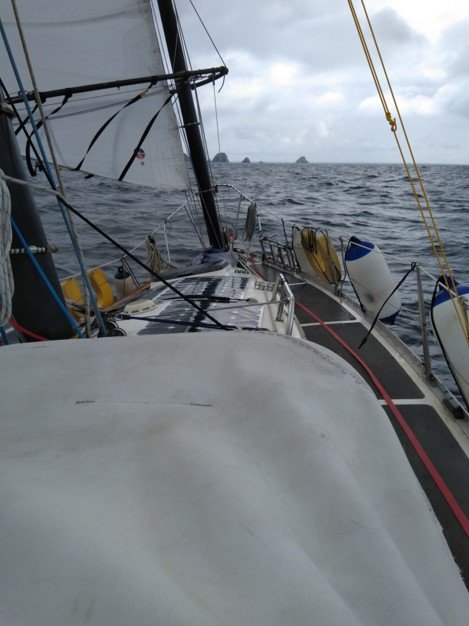
Once clear of Pen-Hir, we had a nice sail at 5 kn with a beam reach all the way to the Raz and got there a little ahead of schedule. The passage through the Raz de Seine offers some absolutely spectacular landscapes. With a heavily overcast sky and light fading though, we were concentrating in the navigation which, even in good conditions, is still challenging. No relaxing and enjoying the view. I don’t have any pics… sad!
Past the Raz, the wind died a little, to about 10 knots true. Now we had an almost but not quite dead run, and the sea from behind. Nausikaä does not like that angle, just past 125 degrees, with not enough wind to really fill the sails. We tried several options. With both sails to the same side, the mizzen shaded the main so much that the main stalled. Gull-winging, with the swell directly from astern, the mizzen just would not stay put, and I had to rig a preventer. Eventually, tired of adjusting sail on the light breeze, I abated the mizzen altogether and run with the main only. Not supposed to do this, but what the hec!
Two hours after clearing the Raz and with night rapidly approaching Joanna and I looked at each other and decided that it was indeed to time to invoke Plan B, so we headed for the bay of Audierne, our “refuge”.
We picked up a buoy in front of St Evette in the dark in among half-dozen other boats, presumably also on passage somewhere else, had dinner with a bottle of wine, a good rest for the night, and a lazy morning the following day. We had cleared the French Finisterre that day. Not a great achievement, perhaps, but I was glad to leave it behind.
The following day, clear and sunny, we left St Evette at 14:30 and made to Loctudy at 19:00, just before HW, broad-reaching all the way on 12 knots of wind. What a delightful sail. What a delightful day!
